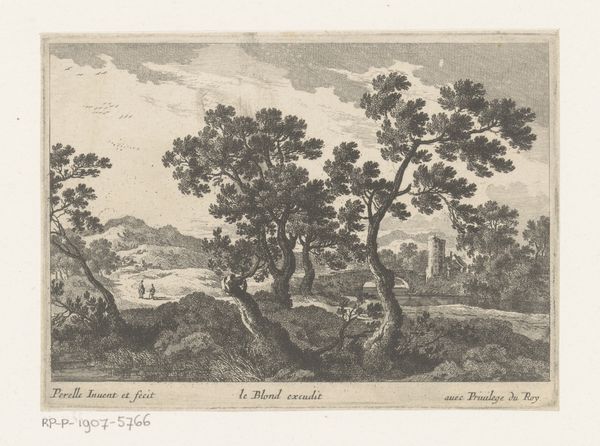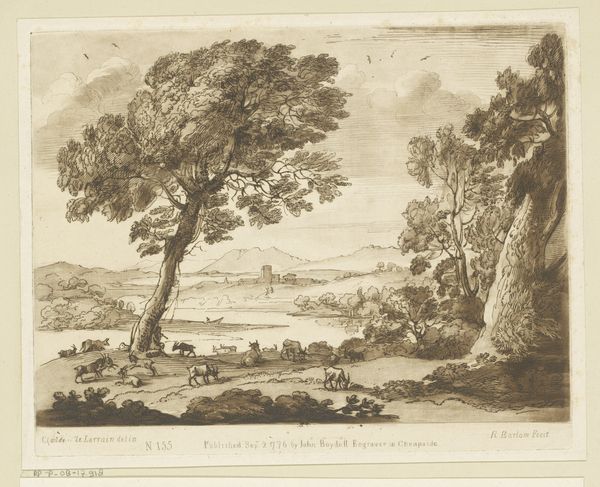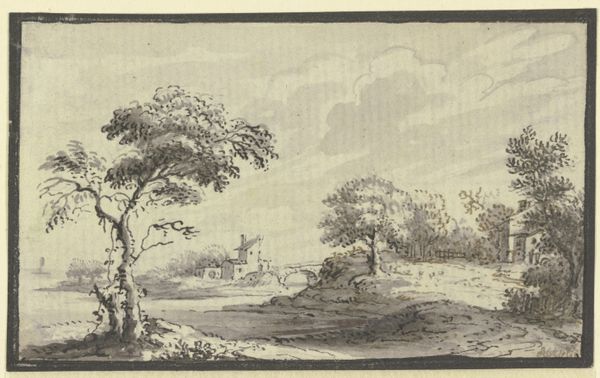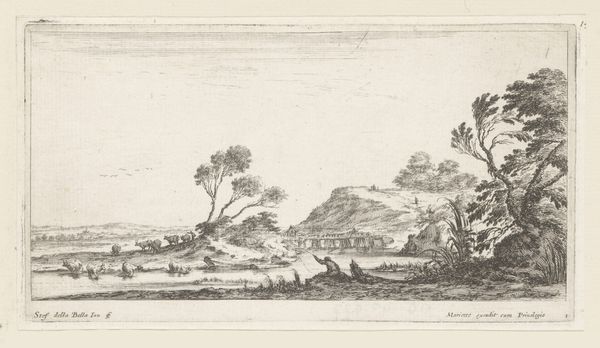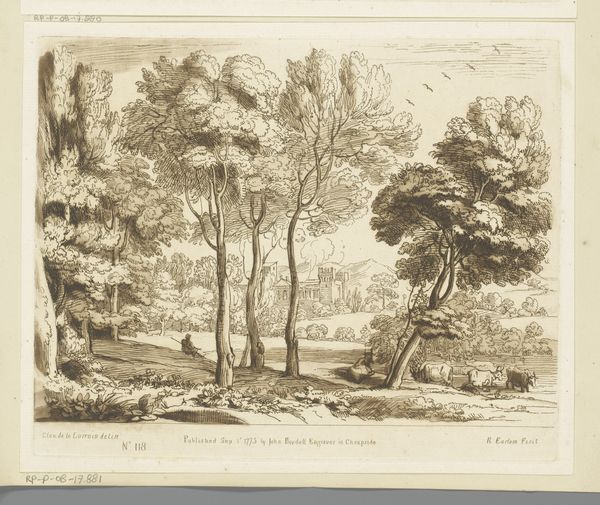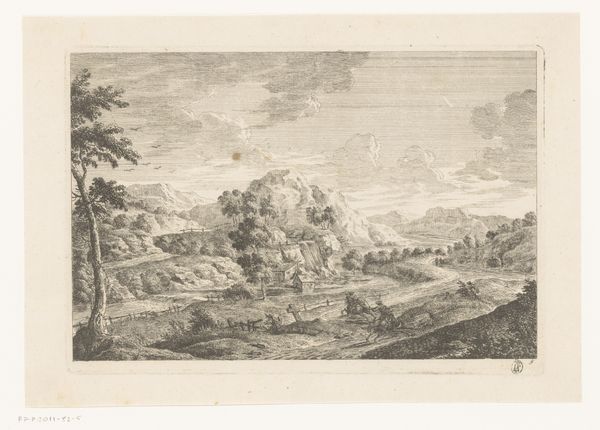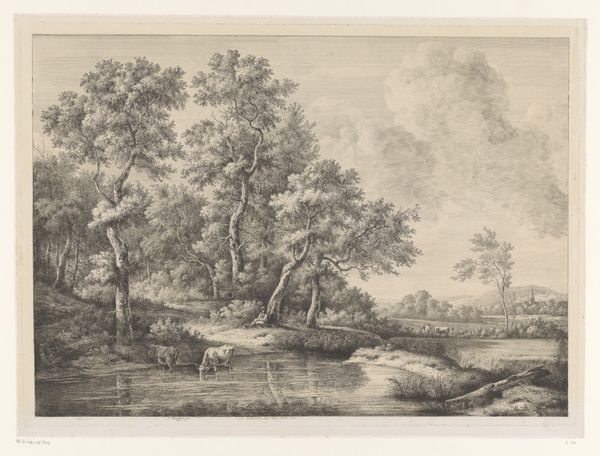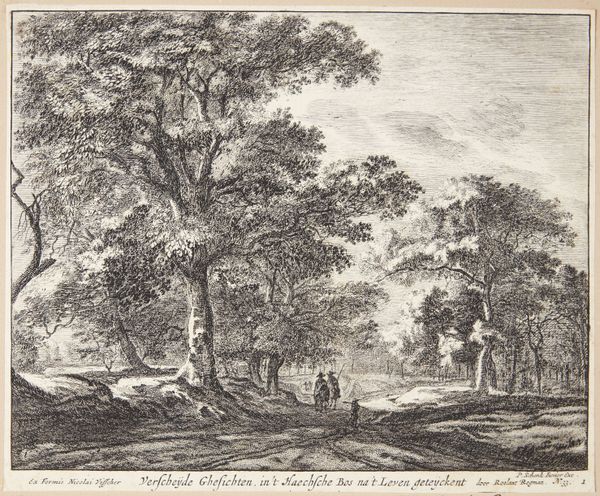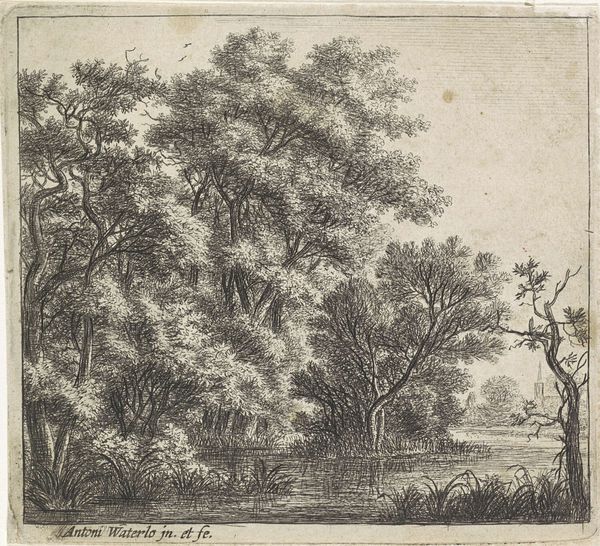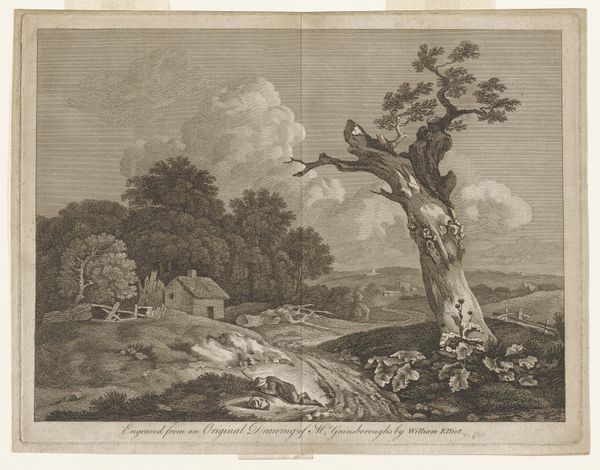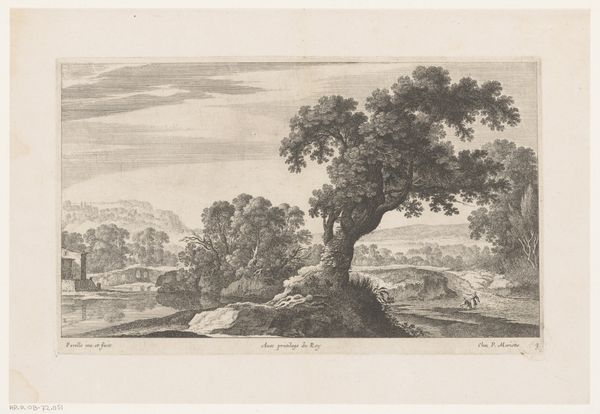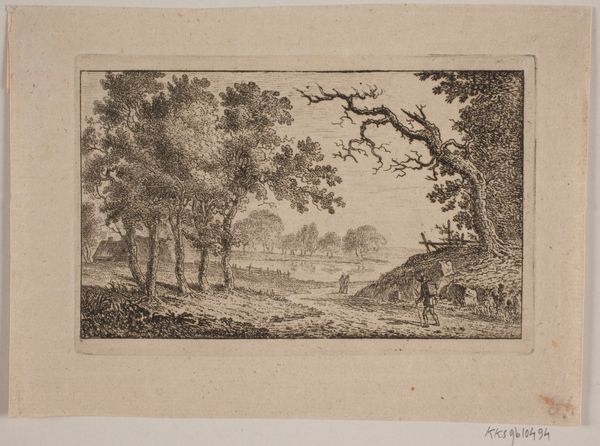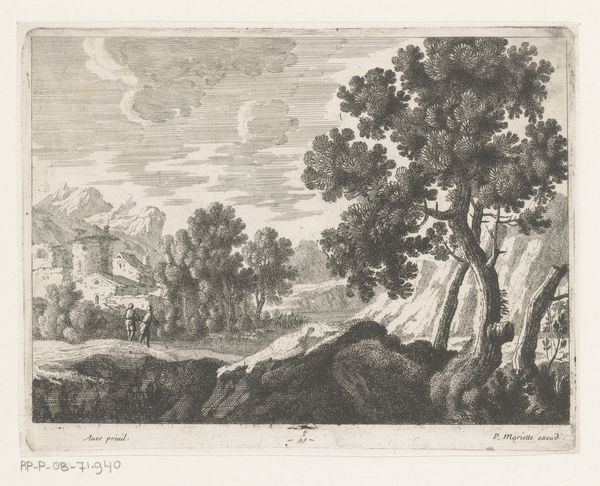
Reizigers aan de waterkant bij Rolde in Drenthe c. 1775 - 1840
0:00
0:00
drawing, print, etching
#
drawing
# print
#
etching
#
landscape
Dimensions: height 140 mm, width 225 mm
Copyright: Rijks Museum: Open Domain
Editor: This is "Reizigers aan de waterkant bij Rolde in Drenthe," Travelers on the Waterfront at Rolde in Drenthe, by Carel Lodewijk Hansen. It's an etching dating from around 1775 to 1840, depicting a serene landscape with travelers resting by a stream. What I find most striking is the contrast between the detailed foreground and the almost faded background. How do you read this piece? Curator: It is interesting how Hansen depicts these figures in relation to the landscape, isn't it? To me, the image speaks to the relationship between the Dutch and their land, particularly the province of Drenthe, a space often romanticized and also one seen as a site for agriculture and peat extraction that was then tied to exploitation and social stratification. Do you see any clues that point to that social stratification? Editor: Well, their placement in the composition does suggest a hierarchy – some travelers on foot, some on horseback... But how does that link to larger issues? Curator: Consider this: the Netherlands has a complicated history of landscape and power. These scenes often seem benign, picturesque, yet are often silent witnesses to class divisions and ownership of the means of production, or to a longing for an agrarian fantasy amidst rapid urban development. Editor: That’s fascinating; I hadn’t considered that perspective. So, instead of just seeing a pretty landscape, we should also think about whose labor and whose land is represented, or *not* represented, here? Curator: Exactly. What stories aren't being told through this idyllic image? Editor: It's given me a whole new way of appreciating landscape art; thank you for pointing out these critical contexts. Curator: And thank you, I think reflecting on these artworks from different angles can inspire us to create more equitable perspectives of representation, both in art history and society today.
Comments
No comments
Be the first to comment and join the conversation on the ultimate creative platform.
